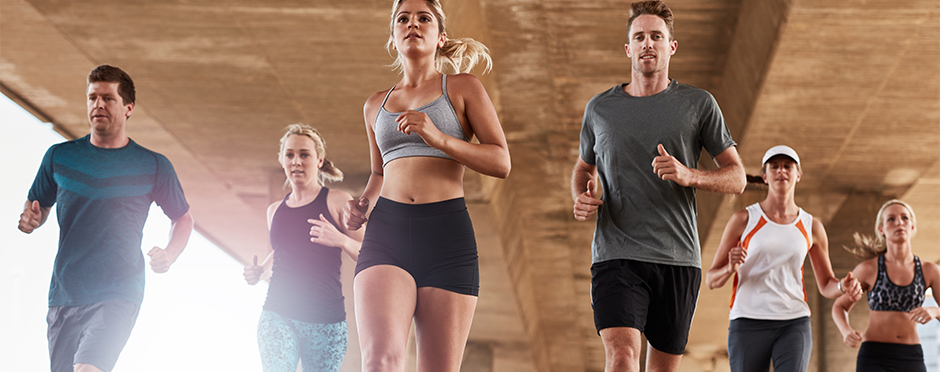
Debut Marathoner: 3 Ways to Prevent Training Injuries
1 CommentTraining for your first marathon can be a daunting task – not only do you have to build up your stamina, but you also have to do so while keeping your body healthy enough for the next training session.
Although runners never intend to get hurt while training, data shows that the average recreational runner has anywhere from a 37 to 56 percent chance of injuring themselves.1 Fortunately, there are things that can be done to reduce the risk of injury when training, including the three tips listed below:
1. Stay Hydrated
Dehydration can cause muscle cramps, as well as impact the body’s ability to heal, carry out normal functions and drain energy. Although most people try to follow the guideline of drinking 64 ounces of water a day to stay hydrated, it is important for runners to drink more water when activity level increases.
The American Council of Exercise (ACE) suggests drinking 17-20 ounces of water two to three hours before the start of exercise, eight ounces 20 to 30 minutes prior to exercise or during warm-up, 7-10 ounces every 10 to 20 minutes during exercise, eight ounces within 30 minutes after exercising and 16-24 ounces for every pound of body weight lost after exercise.2
In addition to drinking water, runners can prevent muscle ramping by making sure they have enough electrolytes. Options to consider include electrolyte supplements, sports drinks or food high in potassium content like bananas. Learn more about staying hydrated and preventing muscle cramping by reading Athletico’s “Runner’s Cramps: Why You Get Them and How You Can Prevent Them.”
2. Warm Up/Cool Down Properly
A proper warm up and cool down can help reduce the risk of injury and overall soreness. Runners should focus on dynamic stretching when warming up. A dynamic warm up includes movements designed to increase the mobility of muscles, tendons, ligaments and the joints. These movements prime the body for more strenuous physical exertion during running. Examples of dynamic stretches include forward and backward lunges, jumping jacks and jogging butt kicks.
Runners should also cool down after training to restore muscles to their proper flexibility. Stretching is a great way to cool down, as it gradually decreases heart rate and reduces the amount of soreness felt following activity. Stretches should be performed for any muscle or muscle groups used during training. Stretches should be held for about 30 seconds, and not to the point of pain. For more stretching tips, check out Athletico’s “Warming Up vs Cooling Down: Things to Know.”
3. Watch Your Form
By paying attention to running technique, runners can decrease the load on their knees to help prevent injury. A simple way to improve technique is by increasing the number of steps taken, as this helps set the body in a good position to fall forward rather than absorb force.
For help analyzing technique, runners should request a video gait analysis at Athletico to get real-time audio and visual feedback on their running style. This analysis provides runners with tips that can help them improve efficiency and prevent future injuries. Read Athletico’s “Video Gait Analysis: What All Runners Should Know” to learn more about the benefits of this service.
Running 26.2 Miles
Training for a 26.2 mile run may not be easy, but you can achieve this goal if you prepare properly leading up to race day. That said, it is important to pay attention to your body while training. If any aches or pains occur along the way, make sure to stop by your nearest Athletico location for a free assessment.
Free assessments are available both in-clinic and virtually through our telehealth platform.
The Athletico blog is an educational resource written by Athletico employees. Athletico bloggers are licensed professionals who abide by the code of ethics outlined by their respective professional associations. The content published in blog posts represents the opinion of the individual author based on their expertise and experience. The content provided in this blog is for informational purposes only, does not constitute medical advice and should not be relied on for making personal health decisions.
1. Johnson, Kristen. “Gym Accident Statistics.” LegalMatch, http://www.legalmatch.com/law-library/article/gym-accident-statistics.html
2. “Healthy Hydration.” ACE Fit | Fitness Information. N.p., n.d. Web. 12 June 2017.


1 Comment
Kevin
A big factor for first time marathoners injury rates is training too hard too close to the big day. Proper rest is paramount to let all those little training injuries and strains heal that have been building up in prior months.